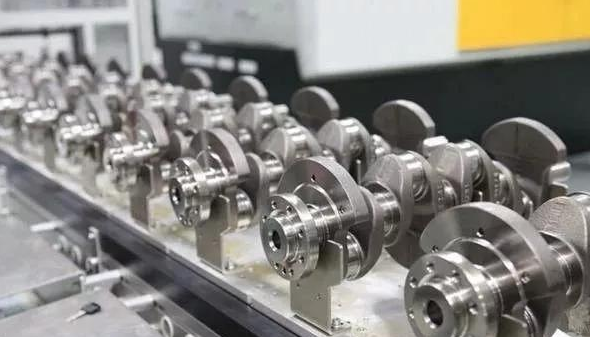Dive into the engineering world of automobiles, and you’ll come across various crucial components intricately linked to a vehicle’s performance. An integral part of this complex structure is the crankshaft bearing, a small yet fundamental element, instrumental in the engine’s smooth operation.
Understanding crankshaft bearings requires an overview of the primary types. So, what are the three types of crankshaft bearings? Let’s unfold this mechanical mystery by examining the main bearings, rod bearings, and thrust bearings.
Main Bearings: Supporting the Crankshaft
Occupying the spotlight as one of the essential types of crankshaft bearings are the main bearings. Their role is to support the crankshaft within the engine block, maintaining its position as it rotates. These bearings experience constant stress due to the ongoing crankshaft rotation, thus requiring a high degree of durability.
Made typically of durable, friction-resistant materials like copper-lead alloys or aluminum, the main bearings can withstand immense heat and pressure. These bearings are designed to absorb the downward force exerted by the piston during the power stroke and serve as a reliable support structure for the crankshaft.
Rod Bearings: Connecting the Pistons
Rod bearings, often considered as the second major type of crankshaft bearings, have a primary function of connecting the pistons to the crankshaft. They are located at the big end of the connecting rod and work closely with the main bearings to ensure the smooth functioning of the crankshaft.
A salient feature of rod bearings is their contribution to reducing friction between the rotating crankshaft and the stationary connecting rod. Rod bearings are paramount in reducing engine heat and enhancing its longevity.
Thrust Bearings: Controlling Lateral Movement
The third and equally important type of crankshaft bearing is the thrust bearing. This bearing type manages the crankshaft’s lateral or side-to-side movement, controlling any excessive axial movement that might result in engine damage.
Located either on the ends of the crankshaft or around the main bearing saddles, these bearings take on the crucial task of maintaining the crankshaft’s alignment. By effectively managing the axial thrust exerted during the power stroke, thrust bearings play an essential role in preserving the engine’s structural integrity.
In conclusion, main bearings, rod bearings, and thrust bearings compose the triad of fundamental crankshaft bearing types. Each plays a distinct yet interconnected role in engine operation and performance. The main bearings provide the support structure, rod bearings link the pistons to the crankshaft, and thrust bearings regulate the lateral movement. Together, they contribute to the smooth and efficient functioning of an engine, serving as silent yet significant champions of the automotive world.
The world of automotive mechanics becomes more fascinating when we delve into the details of its components, like the three types of crankshaft bearings. It’s the understanding of such intricate parts that provides insights into the superior performance of our everyday vehicles.
Introduction to Crankshaft Bearings
Crankshaft bearings are essential components in any engine, serving as a bridge between the crankshaft and the engine block. They have the critical job of reducing friction between these components, thus allowing the crankshaft to spin freely and contribute to the engine’s efficient functioning. The central types of these bearings are the main bearings, rod bearings, and thrust bearings.
Main Bearings: The Central Pillar of Support
Main bearings act as the bedrock of the crankshaft, supporting its rotation within the engine block. Made typically of durable, friction-resistant materials, the main bearings can withstand immense heat and pressure. They absorb the downward force exerted by the piston during the power stroke and serve as a reliable support structure for the crankshaft.
Rod Bearings: The Vital Connectors
Rod bearings connect the pistons to the crankshaft, playing a significant role in the engine’s overall functioning. They reduce friction between the rotating crankshaft and the stationary connecting rod, contributing to the engine’s longevity and efficient performance.
Thrust Bearings: The Guardians of Lateral Movement
Thrust bearings control the crankshaft’s lateral or side-to-side movement, preventing any excessive axial movement that could potentially harm the engine. They maintain the crankshaft’s alignment and manage the axial thrust during the power stroke, playing a vital role in preserving the engine’s structural integrity.
Interconnection and Interdependence of Bearings
The three types of crankshaft bearings, while distinct in function, are interconnected and interdependent. The smooth functioning of the crankshaft, and thus the engine, depends on the collective performance of the main, rod, and thrust bearings. Understanding the interplay between these bearings provides insights into the complex world of engine mechanics.
Conclusion: The Silent Champions of the Automotive World
Main bearings, rod bearings, and thrust bearings form the essential triad of crankshaft bearings. Their collective contribution to reducing friction, connecting essential components, and managing movement ensures the smooth functioning of an engine. Thus, these bearings are the silent yet significant champions in the realm of automotive mechanics.